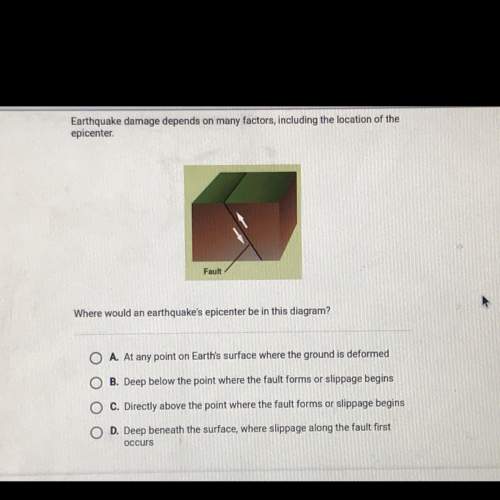
For the diffusion and osmosis lab, you gathered data based on changes in the weight of model cells. to design your experiment, you made educated assumptions about what would pass through the dialysis tubing membrane, and what would not? using knowledge you gained during the macromolecules lab, give examples of how you could tested these assumptions in relation to movement of starch, sugar and proteins. these examples do not need to relate to your group's experiment.

Answers: 1


Another question on Biology

Biology, 21.06.2019 18:30
Which table best shows the impacts resulting from human activity? impact of human activities human activity impact forest area cleared to construct an airport increase in oxygen level vegetation cleared to construct an oil mine increase in pollution impact of human activities human activity impact forest area cleared to construct an airport increase in sound pollution vegetation cleared to construct a power plant contamination of water impact of human activities human activity impact beehives cleared from urban areas increase in vegetation dams constructed on a river increase in fish population impact of human activities human activity impact beehives cleared from urban areas increase in bird population dams constructed on a river better quality of water
Answers: 3

Biology, 22.06.2019 06:30
Amino acids contain the elements carbon, hydrogen, oxygen, nitrogen, and sometimes sulfur. of the 20 amino acids found in humans, 11 are called "nonessential" because they can be manufactured by the body when needed. which elements in these 11 amino acids are commonly obtained from the metabolism of sugar molecules?
Answers: 1

Biology, 22.06.2019 14:00
The polio virus can cause skeletal muscle paralysis by destroying neuron cell bodies. what area of the spinal cord is destroyed
Answers: 3

Biology, 22.06.2019 14:30
How do water’s relative densities as a solid and a liquid differ from that of most other substances? water’s solid and liquid forms have different densities, while most other substances have solid and liquid forms with similar densities. water’s solid and liquid forms have similar densities, while most other substances have solid and liquid forms with different densities. water’s liquid form is less dense than its solid form, while the opposite is true of most other substances. water’s solid form is less dense than its liquid form, while the opposite is true of most other substances.
Answers: 3
You know the right answer?
For the diffusion and osmosis lab, you gathered data based on changes in the weight of model cells....
Questions











Chemistry, 05.07.2019 20:20


Medicine, 05.07.2019 20:20

Chemistry, 05.07.2019 20:20


English, 05.07.2019 20:20







